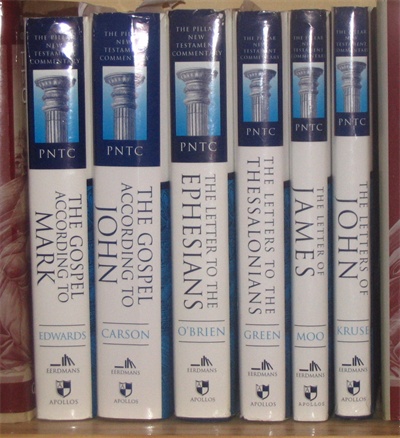
In this generously sized volume of the BST series, Bruce Milne guides us through the gospel of John. Regular readers of this series will know that they can expect an evangelical commitment to Scripture, and a focus on expository preaching that brings home the theological and moral implications of the text to contemporary readers.
The introduction cites internal and external evidence for the apostle John as the author, and favours an early date for this gospel which he sees as an evangelistic tract that complements the synoptic gospels.
I thought his coverage of the opening chapters were particularly good, and even inspired some lyrics for a song I was writing. He emphasises the Christological significance of the miracles, particularly how they show Jesus’ own superiority to Judaism. He is not afraid though to see the miracles also as paradigms of how Jesus is able to meet our own needs.
He draws on the insights of a number of commentators where necessary, and prefers to summarise their conclusions where he agrees with them rather than repeat all the steps in the argument. Carson, Newbiggin and Beasley-Murray are amongst the most frequently quoted.
The book is not organized into a normal chapter format, but he breaks the book down into three major sections, to fit his structure of Christ as King. However, the second of these seconds covers the vast bulk of material, and itself is broken up into three parts, with a major section beginning at chapter 12:20 – the “coronation”. I think the book would actually have been a bit easier to read in a conventional chapter arrangement. I had actually tried to read through this volume once before and only got about three quarters of the way through.
He sees Jesus’ discourse with the disciples in the latter half of the book as being broken into two parts. Perhaps surprisingly John 15 (“I am the true Vine”) is seen as being about mission, although he does acknowledge other themes present. Other highlights for me are his treatment of Jesus’ prayer, and his insights into the human sinful nature as he discusses the trial and crucifixion of Jesus.
Although it is not as comprehensive as Carson’s excellent commentary on John, I have benefited a lot from reading this book. Those preparing Bible studies on John or simply wanting to go a bit deeper will find it rich in practical application and devotional insight.
Postscript
Since I am discussion charismatic issues at the moment on my blog, I will give two quotes from the book that caught my attention in relation to the Holy Spirit.
The first is from p287 and describes Milne’s understanding of the symbolism of the blood and water that flowed from Jesus’ side (after noting that water is symbolic of the Spirit):
“‘The water had to be mingled with Jesus’ blood before the Spirit could give his testimony’. But now this has happened, and so the Spirit can come. Thus to John’s amazement the Spirit is symbolically released from the crucified body of Jesus, indicating that by his death, the kingdom has come which all may enter through faith in him. Thus, even though dead, he imparts the Spirit who is the power of his kingly reign”.
The second is refer’s to Calvin’s comments (although Milne does not agree) on Jesus’ saying “Receive the Holy Spirit” to his disciples in John 20:22.
“… Calvin distinguishes between ‘sprinkling’ with the Spirit (here) and ‘saturation’ with the Spirit at Pentecost.”
Milne prefers to see the comment as “didactic”, with the real coming of the Spirit at Pentecost, but I found it interesting that Calvin of all people should be talking in the kind of terms that those who teach that the baptism in the Spirit is a “second blessing” use.




 The Pillar commentary series has been slowly but surely growing for well around 20 years now, with thirteen published volumes, and
The Pillar commentary series has been slowly but surely growing for well around 20 years now, with thirteen published volumes, and 


 This book is a part of a series of short paperbacks on each of the five “Ephesians 4 ministries”. The books seek to define each ministry, as well as discuss the principles behind it and including practical advice. Mark Stibbe is an ideal candidate for this volume as he is a gifted Bible teacher. He also has a very accessible and readable style.
This book is a part of a series of short paperbacks on each of the five “Ephesians 4 ministries”. The books seek to define each ministry, as well as discuss the principles behind it and including practical advice. Mark Stibbe is an ideal candidate for this volume as he is a gifted Bible teacher. He also has a very accessible and readable style. This is actually the second time I have read this book, and for
This is actually the second time I have read this book, and for